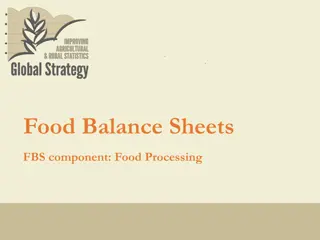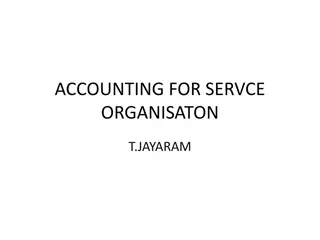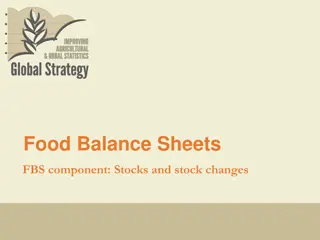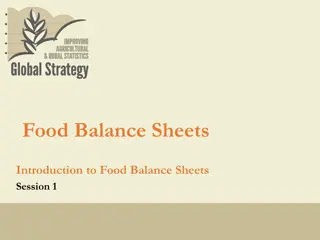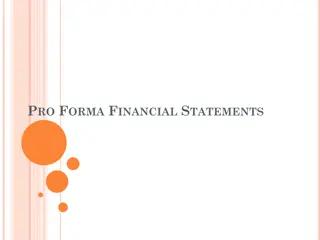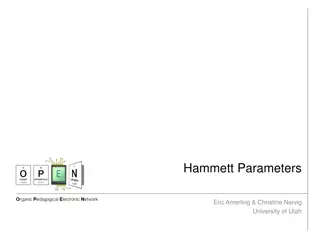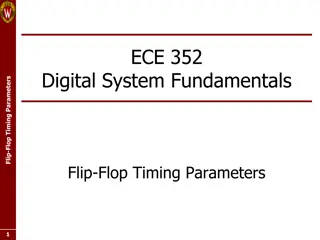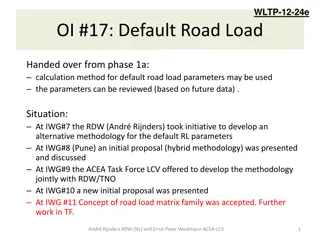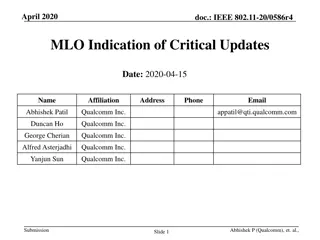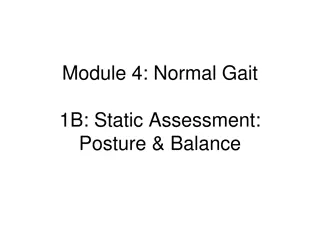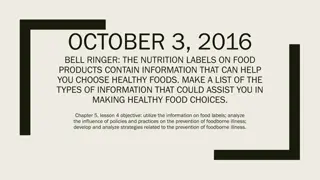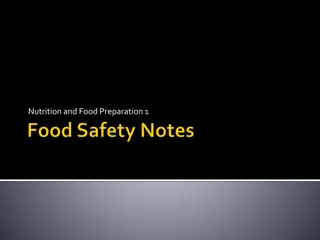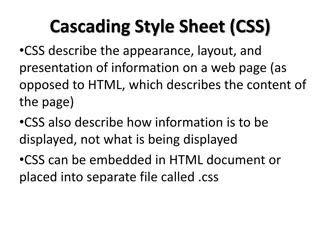Understanding Additional Parameters in Food Balance Sheets
Explore the significance of additional parameters in Food Balance Sheets, the rationale behind choosing the best sources, FAO recommendations, and international standards. Learn how these factors contribute to accurate data analysis and decision-making in food security.
Download Presentation

Please find below an Image/Link to download the presentation.
The content on the website is provided AS IS for your information and personal use only. It may not be sold, licensed, or shared on other websites without obtaining consent from the author. Download presentation by click this link. If you encounter any issues during the download, it is possible that the publisher has removed the file from their server.
E N D
Presentation Transcript
Food Balance Sheets FBS component: additional parameters Session 3.12
Learning objectives What additional parameters are What s the rationale behind the best option among different sources What FAO recommendation are International recognized standards 2 2
Outline FBS component - additional parameters: 1. Population 2. Nutrient Estimates 3. Extraction Rates 4. Processing shares 3 3
FBS component - additional parameters: 1. Population Two options for country FBS compilers: i. Domestically produced population estimates i. Internationally-standardized population estimates from UNPD (FAO recommended option) 4 4
FBS component - additional parameters: 1. Population Why UNPD is the best option? Internationally recognized methodology Easier comparison between countries UNSD estimates are used for many development initiatives (E.g. SDGs) Publicly available dataset https://esa.un.org/unpd/wpp/ 5 5
FBS component - additional parameters: 2. Nutrient Estimates Energy expressed in Kcal - Protein expressed in grams - Fat expressed in grams There are many sources on nutrient content, but two international sources should be noted: 1. INFOODS http://www.fao.org/infoods/infoods/en/ 2. FAO ESS conversion table http://www.fao.org/fileadmin/templates/ess/ess_test_folder/Food_security/ Excel_sheets/Nutritive_Factors.xls FAO recommendations: national estimates should always be the first option 6 6
FBS component - additional parameters: 3. Extraction rates Definition of extraction rate (ER) An ER may vary by country according to the technology used ERs may increase over time but it is advisable to hold them fixed Reasons Reasons for holding for holding the ERs Only in few rare instances it s possible to calculate the ER endogenously Tendency of underestimating the ER Helps the standardization process the ERs fixed fixed: 7 7
FBS component - additional parameters: 3. Extraction rates FAO Recommendations: 1. FBS compilers should ask directly to domestic processors for a periodic review 2. Last resort: FAO handbook on technical conversion http://www.fao.org/fileadmin/templates/ess/d ocuments/methodology/tcf.pdf 8 8
FBS component - additional parameters: 4. Processing shares Processing shares are extremely dependent upon the structure of each country s supply chains As such, there are no international sources that can be consulted Recommendations: I. FBS compilers should consult any available value chain analysis II. Industry experts may also be consulted to provide insight into the supply chain that would assist in estimating shares 9 9
Reference 3rdchapter of the Guidelines: Data for FBS compilation: considerations, sources and imputation 3.3.12 Additional parameters page 91 10 10


